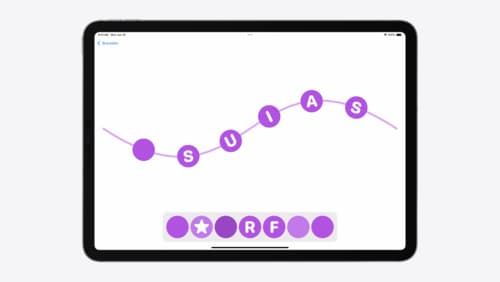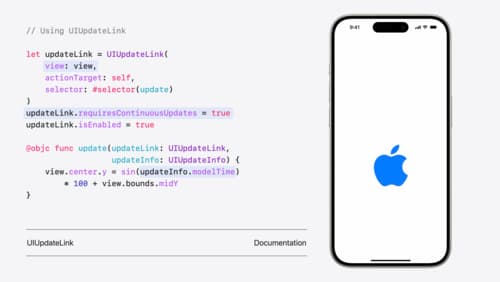如何有效地从UIKit转换到SwiftUI
Asked on 2025-03-06
1 search
To effectively transition from UIKit to SwiftUI, you can leverage the interoperability features that allow both frameworks to work together seamlessly. Here are some key points to consider:
-
Interoperability: SwiftUI provides a way to integrate UIKit views and view controllers using
UIViewRepresentableandUIViewControllerRepresentable. This allows you to use existing UIKit components within a SwiftUI view hierarchy. Conversely, you can embed SwiftUI views into a UIKit app usingUIHostingController. This flexibility enables you to adopt SwiftUI incrementally without needing to rewrite your entire app at once. -
Animations and Gestures: SwiftUI's animation capabilities can be applied to UIKit views. You can use SwiftUI's animation types, including custom animations, to animate UIKit views. This is particularly useful for creating fluid, gesture-driven animations. The interoperability improvements also allow UIKit and AppKit to take advantage of SwiftUI animations, ensuring animations run in sync across framework boundaries.
-
Framework Integration: SwiftUI is designed to work seamlessly with other frameworks in the SDK. This means you can integrate features from UIKit and AppKit as needed, allowing you to build on the rich capabilities of these frameworks while benefiting from SwiftUI's declarative syntax and modern features.
For more detailed guidance on transitioning from UIKit to SwiftUI, you might find the session SwiftUI essentials (20:30) helpful, as it covers SDK interoperability and how to effectively use SwiftUI alongside UIKit. Additionally, the session What’s new in UIKit (03:35) discusses SwiftUI animations in UIKit, which could be beneficial for understanding how to animate UIKit views using SwiftUI.

Enhance your UI animations and transitions
Explore how to adopt the zoom transition in navigation and presentations to increase the sense of continuity in your app, and learn how to animate UIKit views with SwiftUI animations to make it easier to build animations that feel continuous.

Platforms State of the Union
Discover the newest advancements on Apple platforms.

What’s new in UIKit
Explore everything new in UIKit, including tab and document launch experiences, transitions, and text and input changes. We’ll also discuss better-than-ever interoperability between UIKit and SwiftUI animations and gestures, as well as general improvements throughout UIKit.
